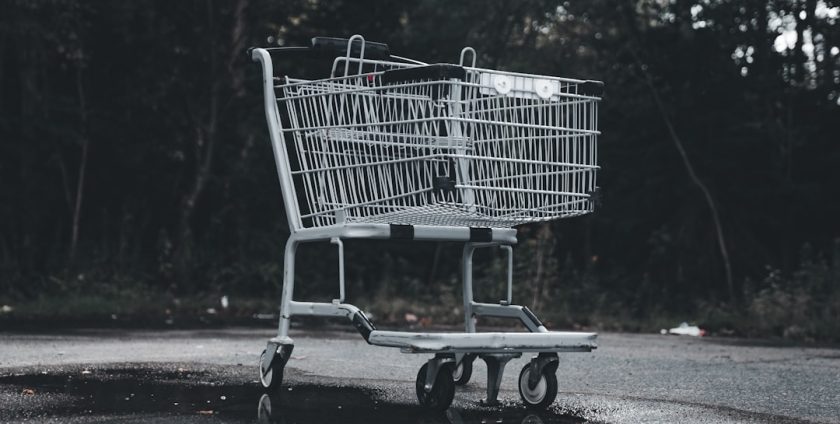
- By: admin
- Category: Commercial Floor Cleaning Machines
- 0 comment
In the bustling environments of cafés, shops, and small offices, cleanliness is not merely a matter of aesthetics; it is a cornerstone of operational efficiency and customer satisfaction. A clean space creates a welcoming atmosphere that encourages patrons to linger longer, ultimately boosting sales and fostering loyalty. For small businesses, where every customer counts, the importance of maintaining a pristine environment cannot be overstated.
A well-kept establishment reflects professionalism and attention to detail, which can significantly influence a customer’s perception and experience. Moreover, efficient cleaning practices contribute to the overall health and safety of both employees and customers. In cafés and shops, where food and drink are served, the risk of contamination is ever-present.
Regular and thorough cleaning helps mitigate this risk, ensuring that surfaces are free from harmful bacteria and allergens. In small offices, a clean workspace can enhance employee productivity and morale, reducing sick days and creating a more pleasant working environment. Thus, investing in efficient cleaning practices is not just about appearance; it is about creating a safe, healthy, and inviting space for everyone.
Summary
- Efficient cleaning is crucial for maintaining a positive customer experience and a healthy work environment in cafés, shops, and small offices.
- Creating a cleaning schedule and checklist helps to ensure that all areas are regularly and thoroughly cleaned.
- Choosing the right cleaning products and equipment is essential for effective cleaning and maintaining a safe environment for staff and customers.
- Training staff on proper cleaning techniques is important for maintaining cleanliness and preventing accidents or health hazards.
- Implementing green cleaning practices not only benefits the environment but also promotes a healthier and more sustainable workplace.
Creating a Cleaning Schedule and Checklist
Establishing a cleaning schedule is essential for maintaining cleanliness in any commercial setting. A well-structured schedule ensures that all areas receive the attention they need on a regular basis, preventing the build-up of dirt and grime that can lead to larger issues down the line. By creating a checklist tailored to the specific needs of your café, shop, or office, you can streamline the cleaning process and ensure that no task is overlooked.
This checklist should include daily, weekly, and monthly tasks, allowing for a comprehensive approach to cleanliness. In addition to outlining specific tasks, a cleaning schedule should also assign responsibilities to staff members. This not only fosters accountability but also encourages teamwork as employees work together to maintain a clean environment.
Regularly reviewing and updating the schedule based on feedback from staff can help identify areas that may require more attention or different cleaning methods. By prioritising organisation in your cleaning efforts, you can create a more efficient workflow that ultimately benefits both employees and customers.
Choosing the Right Cleaning Products and Equipment

Selecting the appropriate cleaning products and equipment is crucial for effective cleaning in commercial settings. With an array of options available on the market, it can be overwhelming to determine which products will best suit your needs. It is essential to consider factors such as the types of surfaces being cleaned, the nature of the business, and any specific health regulations that may apply.
For instance, cafés will require food-safe cleaning agents that effectively eliminate bacteria without leaving harmful residues. Investing in high-quality cleaning equipment can also make a significant difference in efficiency. For example, using commercial-grade vacuum cleaners with HEPA filters can improve indoor air quality while ensuring that dust and allergens are effectively removed from carpets and upholstery.
Additionally, mops with microfibre heads can provide superior cleaning power while being gentle on surfaces.
Training Staff on Proper Cleaning Techniques
Even with the best products and equipment at your disposal, the effectiveness of your cleaning efforts hinges on proper training for your staff. Providing comprehensive training on cleaning techniques not only ensures that tasks are completed correctly but also instills a sense of pride in maintaining a clean environment. Training sessions should cover various aspects of cleaning, including the correct use of equipment, safety protocols, and effective techniques for tackling different types of messes.
Regular refresher courses can also be beneficial in keeping staff up-to-date with best practices and new products or equipment. Encouraging open communication among team members allows for the sharing of tips and tricks that can enhance overall efficiency. By investing time in training your staff, you empower them to take ownership of their roles in maintaining cleanliness, ultimately leading to a more organised and inviting space for customers.
Implementing Green Cleaning Practices
As environmental concerns continue to rise, many businesses are recognising the importance of adopting green cleaning practices. Implementing eco-friendly cleaning solutions not only reduces your establishment’s carbon footprint but also appeals to environmentally conscious customers. Green cleaning products are often made from natural ingredients that are less harmful to both human health and the environment, making them an excellent choice for cafés and shops where food is prepared or served.
In addition to using eco-friendly products, consider adopting sustainable practices such as reducing water usage during cleaning or implementing recycling initiatives within your establishment. Training staff on these green practices can further enhance your commitment to sustainability while fostering a culture of environmental responsibility among employees. By prioritising green cleaning methods, you not only contribute positively to the planet but also position your business as a forward-thinking leader in your industry.
Dealing with Food and Drink Spills

In cafés and shops where food and beverages are served, spills are an inevitable part of daily operations. However, how these spills are managed can significantly impact cleanliness and customer satisfaction. Promptly addressing spills is crucial to prevent stains or sticky residues from setting in, which can lead to more extensive cleaning challenges later on.
Staff should be trained to respond quickly to spills by using appropriate cleaning techniques and products designed for specific types of messes. Creating a designated spill response kit that includes absorbent materials, safe cleaning agents, and tools can streamline the process of dealing with accidents as they occur. This kit should be easily accessible to all staff members so they can act swiftly when needed.
By fostering a proactive approach to spill management, you not only maintain cleanliness but also demonstrate to customers that you prioritise their experience in your establishment.
Managing High-Traffic Areas
High-traffic areas in cafés, shops, and small offices require special attention when it comes to cleaning. These zones often accumulate dirt and debris more quickly than other areas due to increased foot traffic. Regularly scheduled cleanings should be implemented for these spaces to ensure they remain presentable at all times.
This may include frequent vacuuming or mopping of floors, as well as wiping down surfaces that are commonly touched by customers or employees. In addition to routine cleanings, consider implementing strategies to minimise dirt accumulation in high-traffic areas. Placing mats at entrances can help trap dirt before it enters your establishment, while strategically positioning waste bins encourages customers to dispose of rubbish properly.
By actively managing high-traffic areas, you create a cleaner environment that enhances the overall experience for everyone who walks through your doors.
Keeping Restrooms Clean and Sanitary
Restrooms are often considered one of the most critical areas in any commercial establishment when it comes to cleanliness.
Regular inspections should be conducted throughout the day to ensure restrooms are stocked with necessary supplies such as toilet paper, soap, and hand towels while also being cleaned frequently to maintain hygiene standards.
Implementing a thorough cleaning protocol for restrooms is essential for preventing unpleasant odours and unsightly messes. This protocol should include sanitising surfaces such as sinks, toilets, and door handles regularly throughout the day. Additionally, consider using air fresheners or odour-neutralising products to create a pleasant atmosphere for users.
By prioritising restroom cleanliness, you demonstrate your commitment to providing a positive experience for customers while also promoting health and hygiene.
Handling Waste and Recycling
Effective waste management is an integral part of maintaining cleanliness in any commercial setting. Establishing clear protocols for waste disposal ensures that rubbish is handled efficiently while promoting recycling initiatives within your business. Providing clearly labelled bins for general waste, recyclables, and compostable materials encourages both staff and customers to dispose of their waste responsibly.
Regularly scheduled waste collection is essential for preventing overflow or unpleasant odours from accumulating in your establishment. Additionally, consider partnering with local recycling programs or waste management services that align with your sustainability goals. By actively managing waste disposal and recycling efforts, you contribute positively to the environment while creating a cleaner space for everyone.
Maintaining Clean and Organized Storage Areas
Storage areas often become neglected in busy commercial environments; however, keeping these spaces clean and organised is vital for operational efficiency. Cluttered storage areas can lead to difficulties in locating supplies or equipment when needed, resulting in wasted time and frustration for staff members. Implementing an organisational system within storage areas can streamline operations while promoting cleanliness.
Regularly scheduled audits of storage spaces should be conducted to assess inventory levels and remove any expired or unnecessary items. This not only helps maintain cleanliness but also ensures that staff have easy access to essential supplies when required. By prioritising organisation within storage areas, you create a more efficient workflow that ultimately benefits both employees and customers alike.
Hiring Professional Cleaning Services
While implementing internal cleaning protocols is essential for maintaining cleanliness in cafés, shops, and small offices, there may come a time when hiring professional cleaning services becomes necessary. Professional cleaners bring expertise and specialised equipment that can enhance your cleaning efforts significantly. They are trained in industry best practices and can tackle deep-cleaning tasks that may be challenging for staff members to manage during busy hours.
When considering professional cleaning services, it is important to choose a reputable company that understands the unique needs of your business environment. Look for providers who offer flexible scheduling options so that cleaning can be performed during off-peak hours without disrupting daily operations. By investing in professional cleaning services, you ensure that your establishment remains clean and inviting while allowing your staff to focus on their core responsibilities.
In conclusion, maintaining cleanliness in cafés, shops, and small offices is crucial for creating an inviting atmosphere that enhances customer satisfaction while promoting employee productivity. By implementing efficient cleaning practices through structured schedules, proper training, eco-friendly methods, effective waste management strategies, and professional services when necessary, businesses can foster an environment that prioritises health and hygiene while driving success in their operations.
FAQs
What are some efficient cleaning tips for cafés, shops, and small offices?
Some efficient cleaning tips for these spaces include creating a cleaning schedule, using multi-purpose cleaning products, decluttering regularly, and investing in professional cleaning services when needed.
How often should cafés, shops, and small offices be cleaned?
These spaces should be cleaned daily to maintain a clean and hygienic environment. High-traffic areas may require more frequent cleaning, while less frequented areas can be cleaned on a weekly basis.
What are some common cleaning challenges in cafés, shops, and small offices?
Common cleaning challenges in these spaces include managing food and beverage spills, keeping display areas and shelves dust-free, and maintaining clean and hygienic washrooms.
What are the benefits of maintaining a clean environment in cafés, shops, and small offices?
Maintaining a clean environment in these spaces can improve customer satisfaction, create a positive impression, promote a healthy and hygienic work environment, and prolong the lifespan of furniture and equipment.
